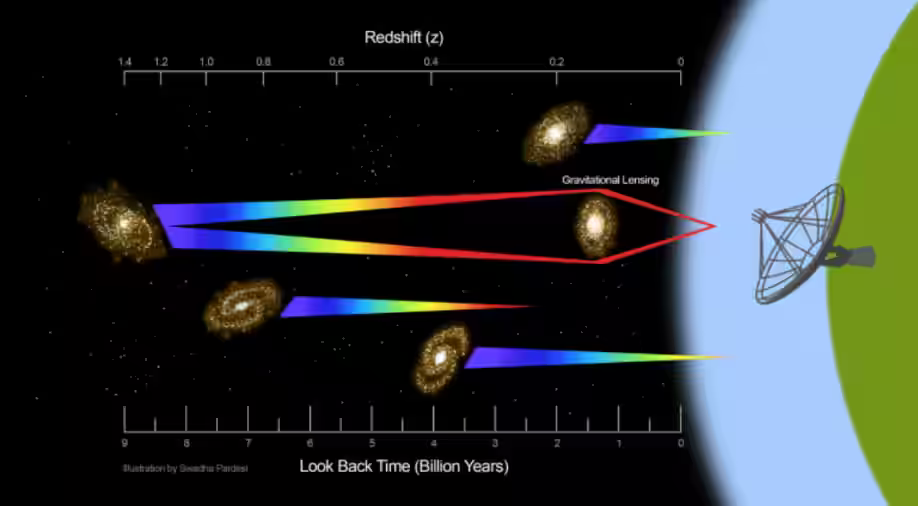India: a radio signal received from the edge of the universe

The giant Meterwave radio telescope, located in Pune, India. Credit: National Center for Radio Astrophysics)
Using a gravitational magnifying glass, astronomers have managed to capture the radio signal from a distant galaxy. This is the furthest ever recorded. Its analysis could open a window on the formation of our universe. Details of the study are published in the Monthly Notices of the Royal Astronomical Society .
The radio frequency signal, picked up by the giant Metrewave radio telescope in India, comes to us from the galaxy SDSSJ0826+5630 which is located 8.8 billion light-years from Earth. In other words, this means that the signal detected was emitted when the universe was only 4.9 billion years old, or roughly a third of its current age.
This signal represents an emission line of neutral hydrogen : the most primordial element in the universe. Its analysis could therefore teach us more about the first stars in the universe.
"Dark Age"
Forged around 400,000 years after the Big Bang, when protons and electrons first bonded with neutrons, neutral hydrogen would have bathed the early universe throughout its "Dark Age", before the appearance of the first stars and galaxies.

The stars that form then emit ultraviolet light which strips the hydrogen atoms of surrounding electrons. They are therefore ionized and are no longer neutral. Gradually, the young stars lose their ultraviolet intensity and some of the ionized atoms eventually recombine into neutral hydrogen. The detection and study of this element can thus enlighten us on the life of the first stars as well as on the period which preceded their formation.
Recall that neutral hydrogen emits light at a wavelength of 21 centimeters . The problem is that these signals often get drowned out in space by the vast cosmic distances. So far, the most distant such signal detected came to us from an object 4.4 billion light-years away . The fact of having been able to capture such a signal is therefore a huge step forward.
To achieve this, astronomers have benefited from a big boost: that of the gravitational magnifying glass effect .

Image of the galaxy's radio signal. Credits: Chakraborty & Roy/NCRA-TIFR/GMRT
Gravitational lens
In the universe, the more mass an object has, the more gravitational influence it has and the more it distorts the fabric of spacetime (imagine a bocce ball on a mattress). Therefore, a light in the background passing through this area will appear deflected and amplified from our point of view (when in reality the light is going straight).
In this case, an object between the star-forming galaxy SDSSJ0826+5630 and Earth amplified the radio signal by a factor of 30, ultimately allowing the telescope to pick it up.
Researchers will now use this knowledge to improve the mapping of the universe through its different cosmological ages and hopefully identify precisely the epoch from which the first stars began to shine.
Source: websites

